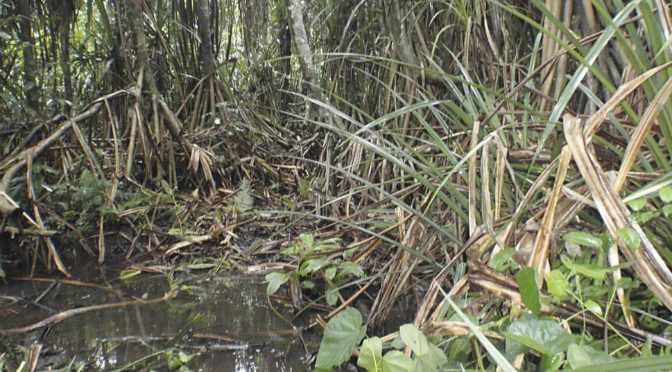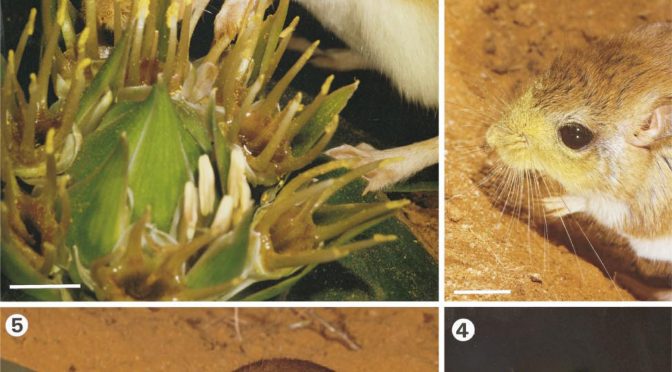Celebrating Plants and People
-

The Plant That Reveals Hidden Diamond Mines
A geologist has discovered a thorny, palmlike plant in Liberia that seems to grow only on top of kimberlite pipes—columns of volcanic rock hundreds of meters across that extend deep into Earth, left by ancient eruptions that exhumed diamonds from the mantle. If the plant is as choosy as it seems to be, diamond hunters…
-
No Mountain Is An Island (for its plant species). Unless It Is.
In plants, if populations are separated by a landscape barrier such that pollen or seeds are unable to traverse either over or through, then the populations will begin to differ, either via mutations or genetic drift over time. However, habitat fragmentation and distance may not always be barriers, depending on the species and their modes…
-
Poaching Of Large Herbivores And Habitat Loss Alters The Planet
The decline of the world’s large herbivores, especially in Africa and parts of Asia, is raising the specter of an “empty landscape” in some of the most diverse ecosystems on the planet, according to a newly published study.
-

The Cutest Pollinators: Identifying Rodent Pollinated Plants
The flowers of the South African lily Massonia depressa Houtt. (Hyacinthaceae) captured our attention because they have many features in common with rodent-pollinated proteas, such as being positioned at ground level and lacking the colorful petals that most plants use to attract insects or birds. The flowers also share stiff anthers, a stigma–nectar distance of…
-
How Vines Climb: Still Working On Figuring That Out
We present some recent advances in the understanding of attachment mechanics. The research combines approaches from plant development, biomechanics, molecular biology, and structural biology.
-
To Save Native Species, Dunes Must Be Allowed To Move
Beginning in the 1880s, coastal dunes in the United States were planted with European beachgrass (Ammophila arenaria) in an attempt to hold the sand in place and prevent it from migrating. The grass did the job it was brought in to do. As it trapped sand in its deep roots, the dunes at the beachfront…
-
Picky Orchid Attracts Specific Species Of Carrion Fly
Of all insect species visiting carrion, only a very minor proportion pollinated the carrion-mimicking plant species Satyrium pumilum (orchid) . We argued that this most likely reflects niche differentation among carrion insects, with a critical role for scent quantity in brood- and food-site location.
-
Conifers’ Successful Pollination Strategies Still Allow Innovations
An apparently advantageous mechanism of conifer pollination has nevertheless been disappearing over millions of years, a new study finds. The mechanism works well, but because it depends on three traits related only loosely, the vagaries of evolution have led to its demise in many species. It its wake, however, a diversity of new traits and…
-
Maple Syrup Solves Antibiotic Resistance
A concentrated extract of maple syrup makes disease-causing bacteria more susceptible to antibiotics,
-
Naturalistic Exhibits More Effective Than Traditional Exhibits at Improving Zoo-Visitor Attitudes toward Apes
To our knowledge, this is the first evidence that a naturalistic exhibit may elicit zoo-visitor interest in free-ranging or wild counterparts of the species on display.
